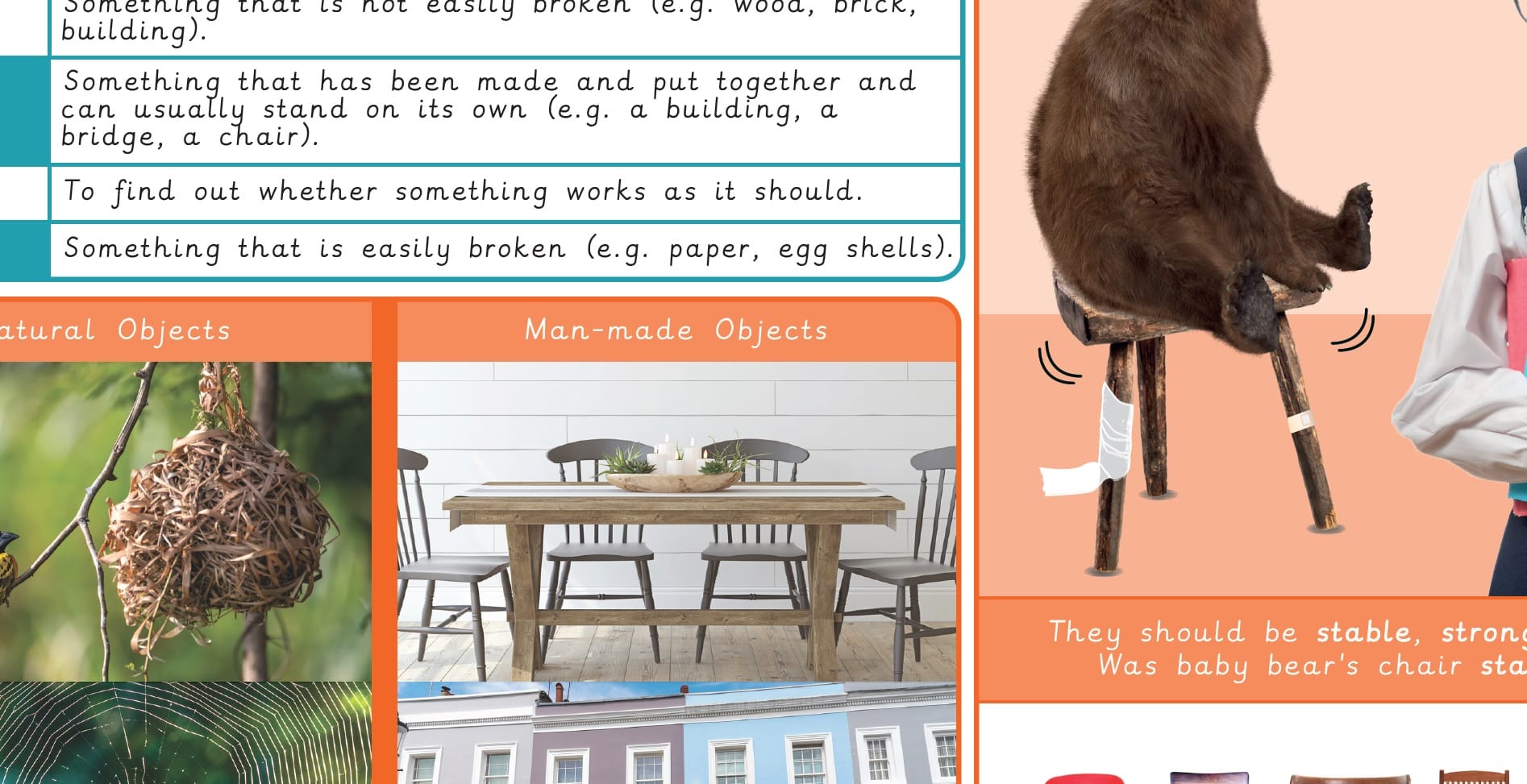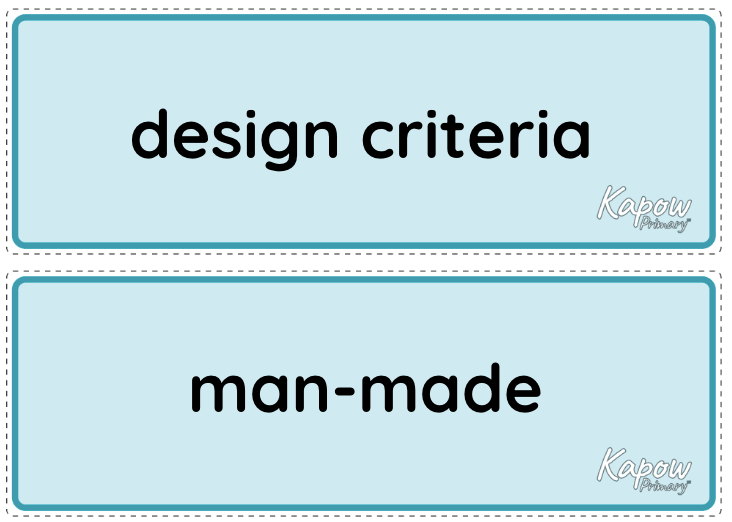Structures: Baby Bear’s chair
This unit hub can be used to inform your medium term plan and to navigate to related resources.
The Curriculum and Assessment Review final report has been released. We’re reviewing the recommendations and planning for future updates. Learn more
- Subjects >
- Design and technology >
- Key stage 1 >
- Year 2 >
- Structures >
-
Structures: Baby Bear’s chair
Please note
This unit has been replaced by the unit *New* Structures: A chair for a bear. It will move to our Content archive in October 2026. It will remain permanently available but will not be updated in line with curriculum or website developments.
Unit outcomes
Pupils who are secure will be able to:
- Identify man-made and natural structures.
- Identify stable and unstable structural shapes.
- Contribute to discussions.
- Identify features that make a chair stable.
- Work independently to make a stable structure, following a demonstration.
- Explain how their ideas would be suitable for Baby Bear.
- Produce a model that supports a teddy, using the appropriate materials and construction techniques.
- Explain how they made their model strong, stiff and stable.
Suggested prior learning
ARCHIVED Year 1: Structures: Constructing a windmill
Get startedLesson plans
Lesson 1: Exploring stability
- To explore the concept and features of structures and the stability of different shapes.
Lesson 2: Strengthening materials
- To understand that the shape of the structure affects its strength.
Lesson 3: Making Baby Bear’s chair
- To make a structure according to design criteria.
Lesson 4: Fixing and testing Baby Bear’s chair
- To produce a finished structure and evaluate its strength, stiffness and stability.
Key skills
Key knowledge
Related content
Unit resources

Knowledge organiser: DT – Y2 Structures Baby bear’s chair
An engaging summary document for pupils, encapsulating the key facts and knowledge for the Year 2 Structures: Baby bear's chair…

Vocabulary display – D&T Y2: Structures: Baby Bear’s chair
A display version of the vocabulary from the unit 'Baby Bear’s chair'.
Cross-curricular opportunities
Mathematics
‘Pupils should be taught to:
- identify and describe the properties of 3-D shapes, including the number of edges, vertices and faces
- identify 2-D shapes on the surface of 3-D shapes, [for example, a circle on a cylinder and a triangle on a pyramid]
- compare and sort common 2-D and 3-D shapes and everyday objects.
- compare and order lengths’
See National curriculum - Mathematics key stages 1 to 2.
Our Baby Bear’s Chair lesson plan builds on mathematical knowledge of 3-D shapes, helping pupils apply concepts of edges, vertices, and faces to create a stable chair model.
Build on the learning
Structures: Constructing a castle
Pupils build on their knowledge from the Baby Bear’s Chair lesson plan, where they explored stability and structure, to create more complex structures using geometric shapes in constructing a castle.

